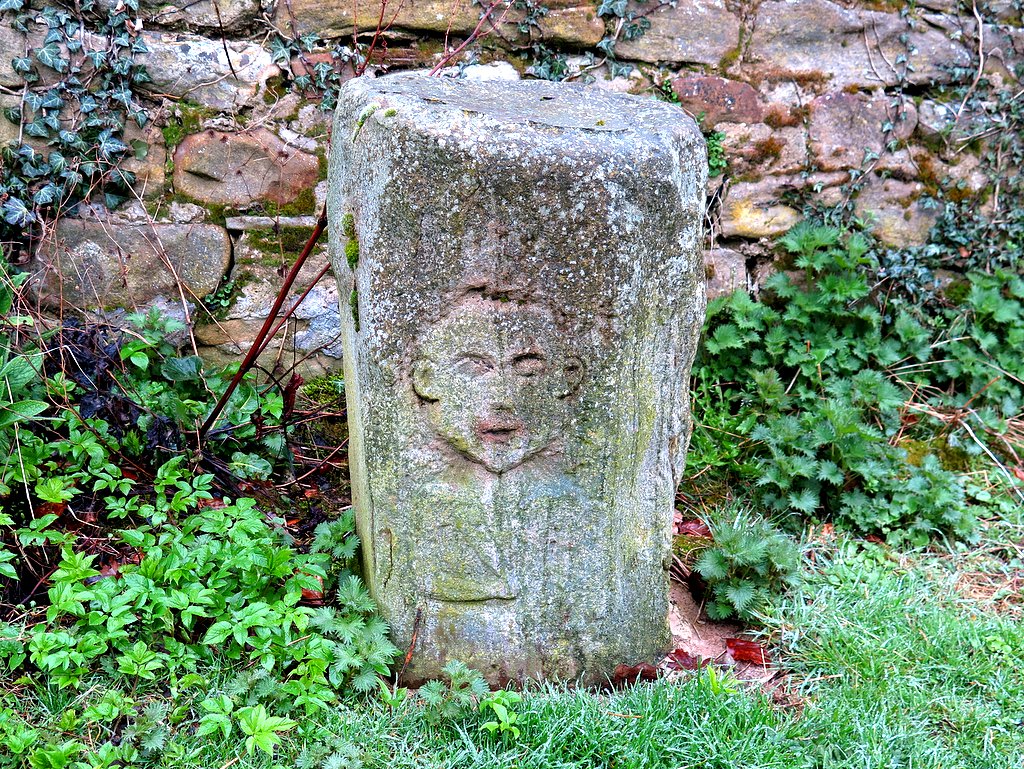Believed to be of Romano-British origin, the stone represents a rare, previously unrecorded style. The figure, possibly ‘Hercules’, carries a club in right hand. The carving was kept in Acomb House for 30 years, then spent 5 years in a barn. It now stands just off the bridleway at the edge of the village.
It was found in 1970 at Water's Meet (Howford), where the Rivers North & South Tyne join west of Hexham and remained at Acomb House for 30 years until the house was sold.
Stan Beckensall compiled a report on the carving and sent it to English Heritage. He said experts at the Museum of Antiquities and the Vindolanda and Arbeia Forts on Hadrian’s Wall had confirmed the carving was probably made during the Roman occupation in the 2nd or 3rd century.
"Paul Bidwell, an expert at Arbeia Fort (South Shields), says it’s in a native style and therefore very unusual and very rare – perhaps unique,” said Stan.
“The carving is obviously meant to be Hercules; he’s holding a club across his chest in one hand and a round object in the other that might be a purse or a dish."
“It’s a carved figure of a man with a very sweet smile on his face. There is still some debate as to whether it’s actually Roman,” she says. “It was found at the Tyne Waters Meet in 1970 and was kept in a barn for many years before it reappeared. The villagers wouldn’t let it go to the museum – it’s now on a concrete plinth at the edge of the village."





 RSS Feed
RSS Feed
